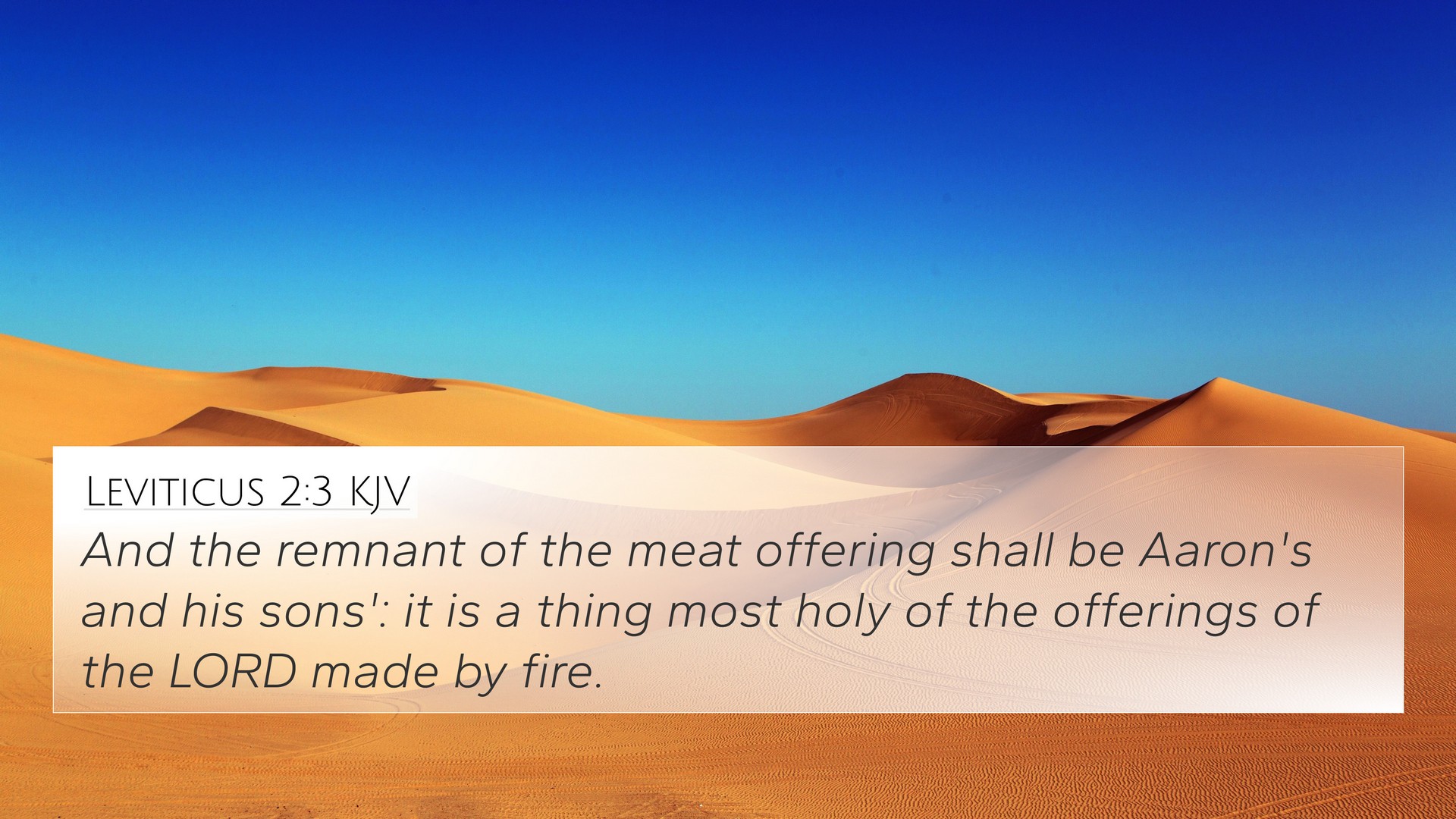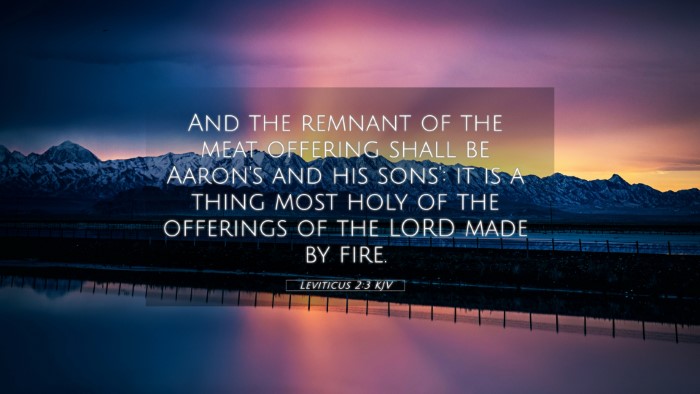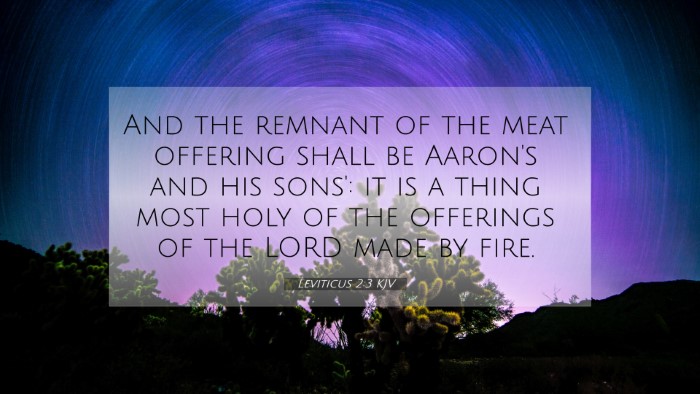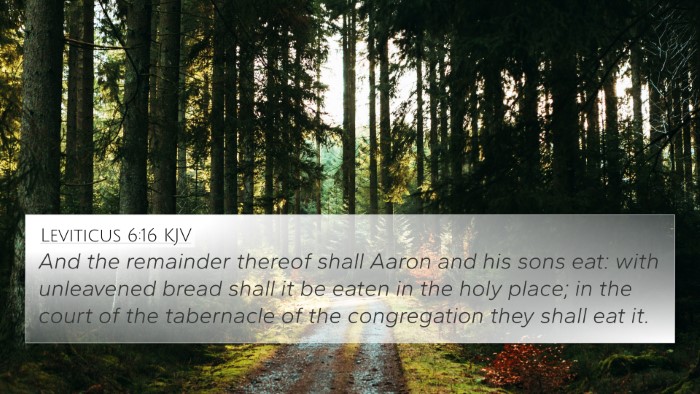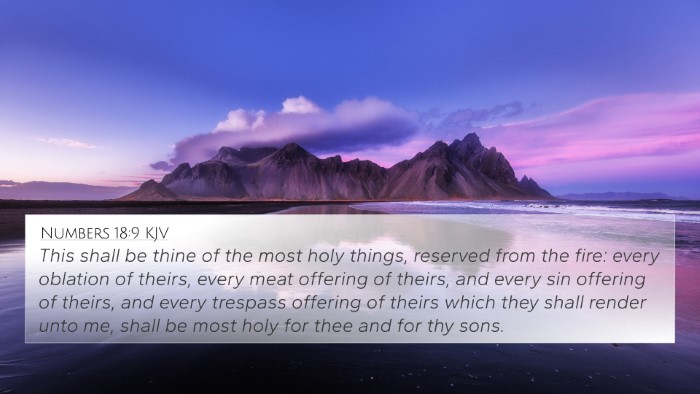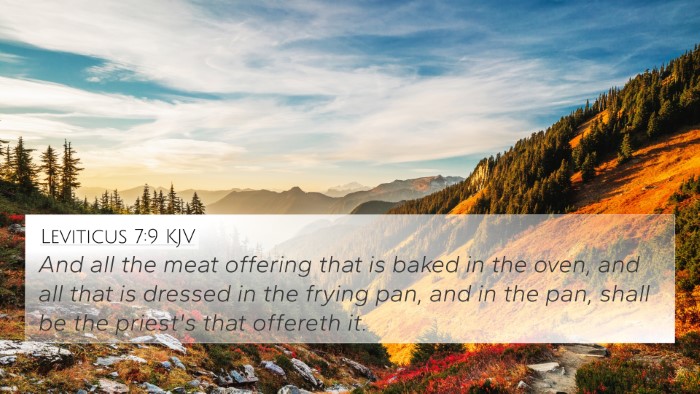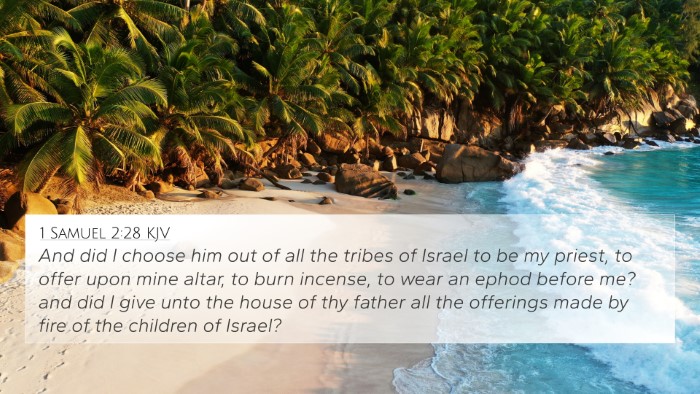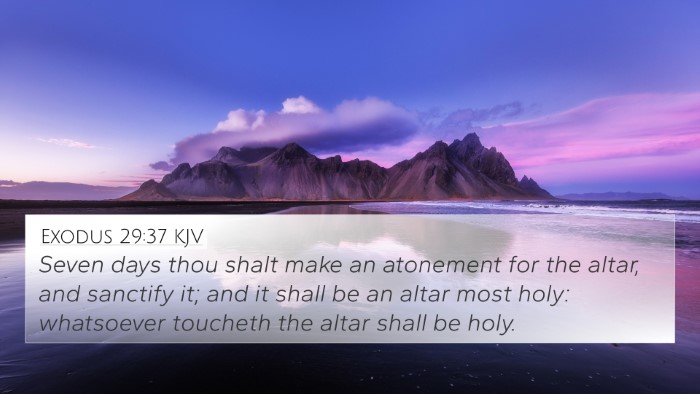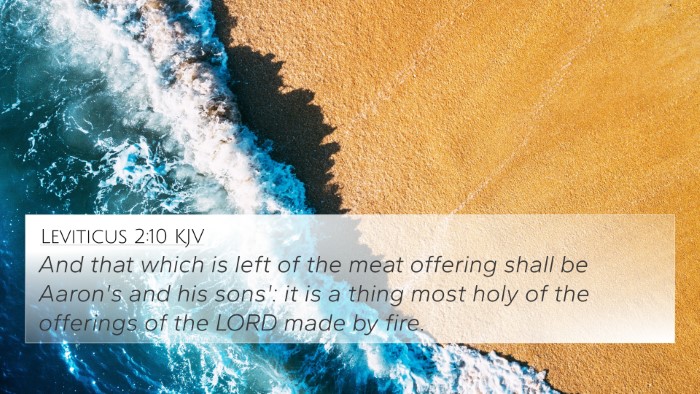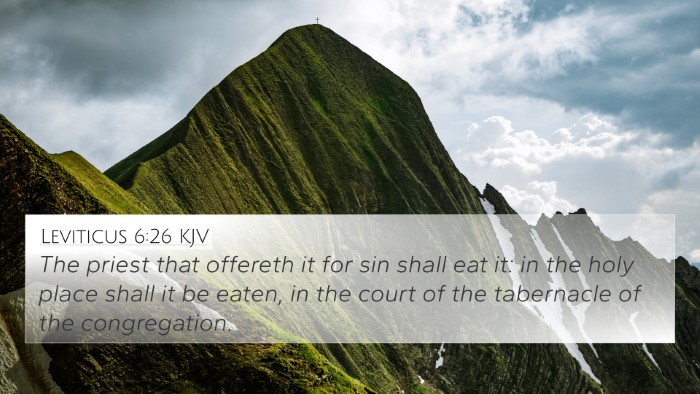Understanding Leviticus 2:3
Leviticus 2:3 states:
"And the remnant of the meat offering shall be Aaron's and his sons': It is a thing most holy of the offerings of the Lord made by fire."
Summary and Interpretation
This verse focuses on the regulations concerning the meat offering in the sacrificial system of ancient Israel. It highlights the role of the priests, specifically Aaron and his sons, in receiving the offerings, which were designated as most holy. This emphasizes both the sacredness of the offerings and the responsibilities of the priests.
Key Themes
- The Holiness of Offerings: The designation of the offerings as "most holy" signifies their importance in worship and the requirement of purity in approach to God.
- Priestly Role: Aaron and his sons represent the Levitical priesthood, responsible for performing sacrifices and mediating between God and the people.
- Divine Instruction: The verse reflects God's detailed directives for worship, indicating that proper reverence and structure are essential in the relationship between God and His people.
Cross-References
Here are some related Bible verses that expand on the themes found in Leviticus 2:3:
- Exodus 29:28: Discusses the priest's inheritance from the offerings.
- Leviticus 6:16: Details on the consumption of meat offerings by the priests.
- Numbers 18:8-11: Outlines the duties and portions of the priests regarding the offerings.
- Deuteronomy 18:1-2: Indicates the provision for the Levites from the sacrifices of the people.
- Haggai 2:12: Discusses the concept of holiness being transmitted or not transmitted through offerings.
- Hebrews 5:1-3: Highlights the role of a priest in offering gifts and sacrifices for the people.
- Matthew 5:23-24: Teaches the importance of proper relationships in worship scenarios.
- 1 Peter 2:5: Refers to believers as a holy priesthood, applicable to the New Testament context.
- Romans 12:1: Calls for believers to present themselves as living sacrifices to God.
- Hebrews 10:2: Discusses the insufficiency of the sacrificial system for total sanctification.
Comparative Bible Verse Analysis
By analyzing the connections between the meat offerings outlined in Leviticus and New Testament understandings, we can see a theological evolution regarding sacrifice:
- Old Testament vs. New Testament: While Leviticus emphasizes ritualistic sacrifices, the New Testament shifts the focus to Christ as the ultimate sacrifice.
- Priestly Functions: The Levitical priesthood was foundational, yet the Book of Hebrews teaches about the superiority of Christ's priesthood.
- Holiness and Sacrifice: Both Testaments emphasize holiness, but the method and understanding of such holiness have transformed through the redemptive work of Jesus.
Tools for Bible Cross-Referencing
To study biblical connections effectively, consider utilizing:
- Bible Concordance: A tool to find words and themes throughout Scripture.
- Bible Cross-Reference Guide: Resources offering specific verses that relate thematically or contextually.
- Cross-Reference Systems: Many Bibles come with built-in cross-references for deeper study.
- Bible Reference Resources: Websites and commentaries that outline key connections and themes across Scriptures.
Identifying Connections
Understanding how different verses relate enriches our understanding of biblical theology. For instance, examining the notion of a meal offering (Leviticus 2:3) in light of New Testament teachings (Hebrews 13:15) reveals a deeper theme of sacrifice and worship. Observing the parallels can lead to a more comprehensive understanding of the overarching narrative of Scripture.
Conclusion
Leviticus 2:3 serves as a crucial piece of the intricate puzzle of the biblical sacrificial system. By connecting this verse with various cross-references and considering the Old and New Testament dialogue, believers can gain a profound understanding of God's holiness, the importance of the priesthood, and the ultimate sacrifice made through Jesus Christ.
